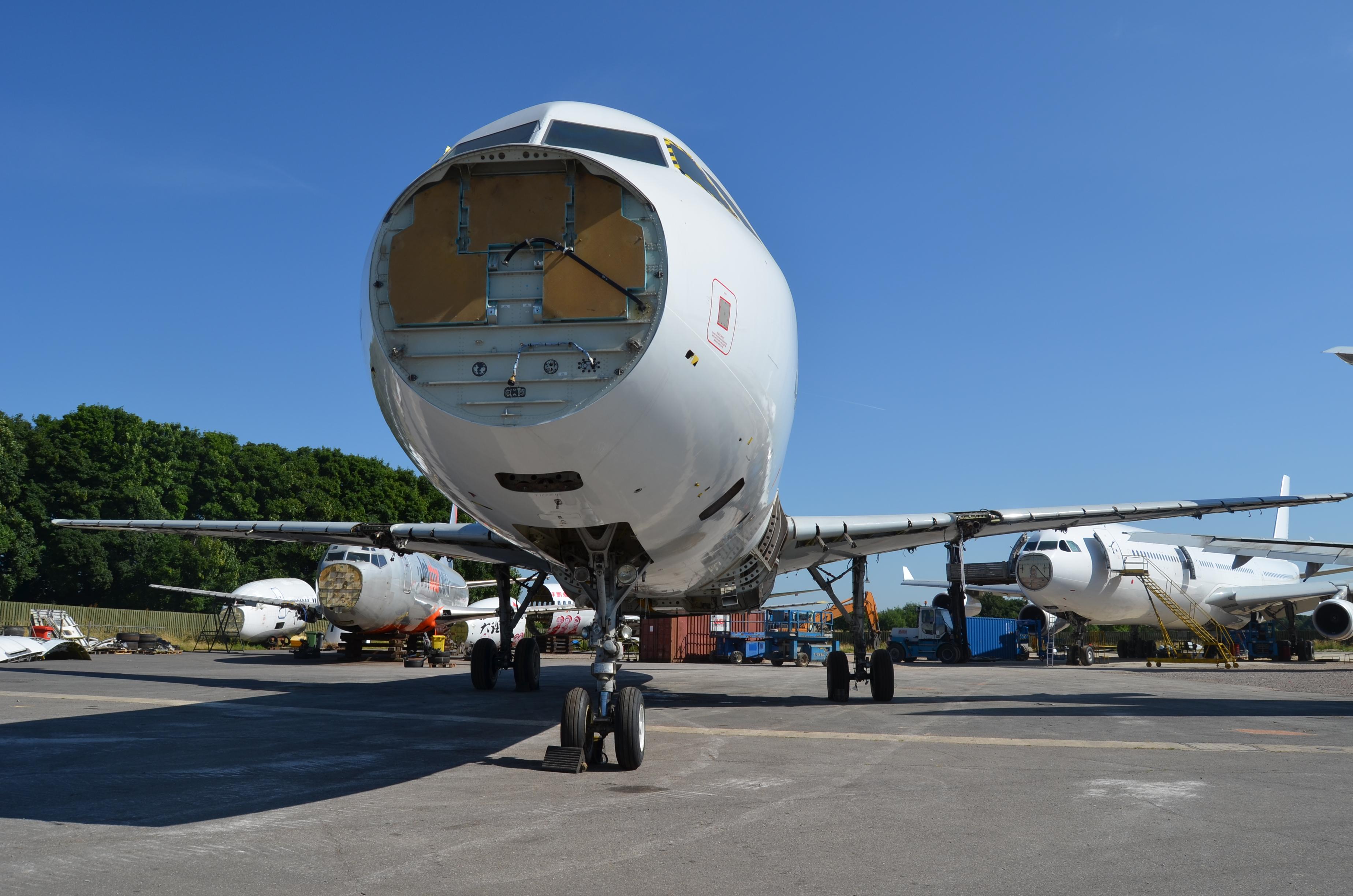Aircraft Storage Booms at UK Disassembler, but Part-Out Could Be A Waiting Game

Aircraft storage is booming at UK-based disassembly specialist Air Salvage International (ASI), but unlike previous years, the vast majority of aircraft arriving on site are not showing up with end of life contracts attached. Nevertheless, ASI is expecting the majority of these aircraft to call its Cotswold Airport facilities their final resting place—particularly as fleets shift moving into 2021.
“Our parking and our storage through our [Part] 145 have increased dramatically because of COVID. We’ve gone from, say, a pre-March 2020 where, for ASI, 90% of the aircraft that arrived for disassembly or with end of life had a contract attached to it,” says James Cobbold, sales manager, Air Salvage International. “We are receiving more and more aircraft all the time, and most of them are operators or lease companies coming back because they are aging aircraft. They are basically either early lease returned or it’s through fleet restructuring, and they’ve basically been parked up and stored at a facility where we can offer 145 storage, but also a facility where it can be sold, disassembled and disposed of with relative ease.”
The facility now has approximately 50 aircraft stored on site—the most in its 23 year history—comprised of approximately 20 widebodies and 30 narrowbodies. According to Cobbold, ASI expects the majority of these aircraft to stay and be sold for part-out—although he doesn’t expect this to happen just yet. Citing discussions with the leasing community dating back as far as early March 2020, Cobbold says most lessors saw the writing on the wall and were preparing themselves to play a waiting game.
“They’ve got no interest in selling off an asset cheap. The money’s been made already in the aircraft—remains, reserves, etc. They were happy to sit on an asset parked and stored for two to three years if need be before they sold it because a lot of the parts traders will be looking for a cheap deal,” he says. “We are seeing some that are being sold off a bit cheaper than you would expect, but a lot of the bigger leasing houses are happy to sit on these aircraft and wait for the right price. They’re not doing a kneejerk reaction and a quick fire sale. They would rather sit on the asset and wait for the market to pick up.”

Cobbold says he expects approximately 90% or more of these aircraft to eventually be sold for parts, although the amount of parts that may actually prove valuable could be reduced due to fewer aircraft flying. For aircraft like the Boeing 747, which ASI has seen an influx of for teardown, there has been a downturn in part sales due to fewer operating fleets, but there is still some need due to cargo operations and airlines that are still operating the model.
“Talking to parts traders that are buying up these assets, they’re not taking 800 to 1,000 parts off an airframe like they would’ve done in the past. They’re taking anything from 50 to maybe 200 parts off an airframe in some instances,” he says. These include key components with value that are often replaced, such as wheels and brakes, landing gear, APUs and select avionics components.
ASI currently has 15 747s on site for disassembly, including nine from British Airways, which recently retired the aircraft from its fleet. Eight of the British Airways 747s have already undergone engine removal, while the ninth is staying at ASI's Cotswold Airport site to be used as a corporate and educational facility. Cobbold says the airline has not yet made a decision about full disassembly and part-out, but he expects this to happen in the first quarter of 2021.
Other aircraft types finding their way to ASI for disassembly within the past year include six Airbus A340s and “a lot of older A320s and 737 New Gens,” particularly due to more deliveries of A320neos and the 737 MAX returning to service.
Meanwhile, ASI is nearly at capacity for widebody storage but still has room for narrowbodies, with Cobbold estimating that ASI can probably take another 20-25 due to remaining apron space. While the company is not actively looking to add new facilities, it is keeping its mind open in case Brexit may make this necessary. Cobbold says ASI has “a few facilities” that are available to it outside the UK if need be.





